20 Composable Store Examples: Composable Commerce in Action

Impressed by the new digital trend — Composable Commerce, huh? You’ve probably heard many eCommerce experts advocating it proudly.
But hold on a sec, how do you evaluate this fancy new concept without witnessing the actual results? It’s like trying to review a movie without watching it, right?
I totally understand your curiosity. You’ve heard the buzz, you’ve seen the headlines, and now you’re itching to see some Composable Commerce in action.
Well, we are back with some great eCommerce stores running with this new composable approach, i.e. Composable Store Examples.
Let’s check them out one-by-one!
1. Miko
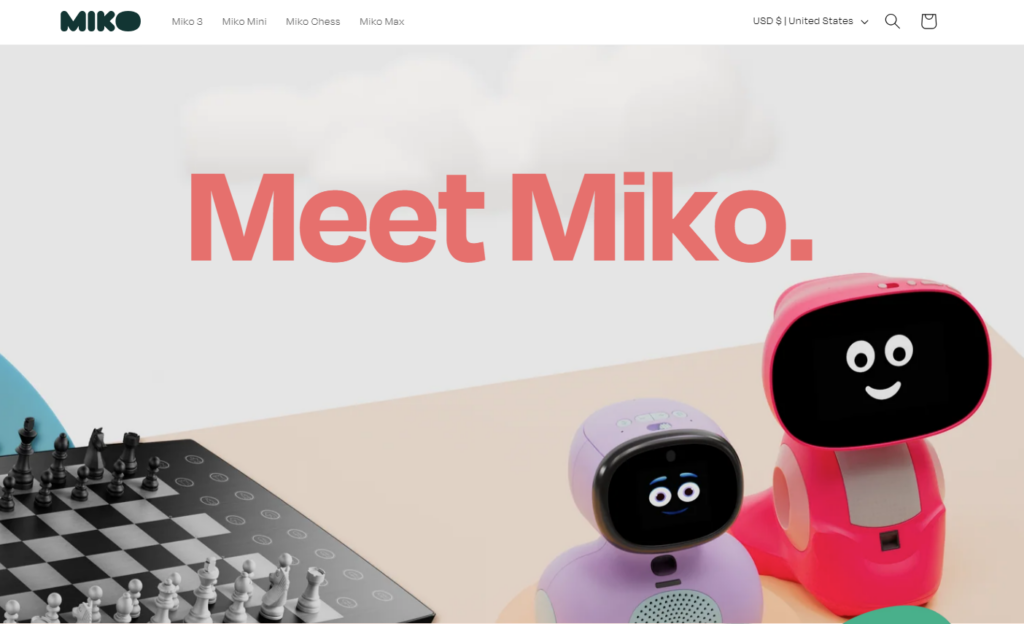
So the list of best composable stores starts with Miko – one of our valuable clients!
Miko, a pioneering consumer robotics lab, has adopted composable commerce to revolutionize child education with its Emotional Intelligent Robot, Miko 3.
Facing challenges such as the need for a digital omnichannel presence, global expansion, speed, and flexibility, and an enhanced frontend head, Miko aimed innovative solutions.
They opted for a composable architecture, integrating Alokai (Formerly Vue Storefront) with Shopify, enabling a flexible storefront that met their diverse needs. A subscription platform integration enhanced customer acquisition and retention. SEO improvements and seamless data synchronization with Shopify boosted performance.
Miko’s transformation highlights the power of composable commerce in providing personalized and globally accessible educational experiences.
2. Jollyes
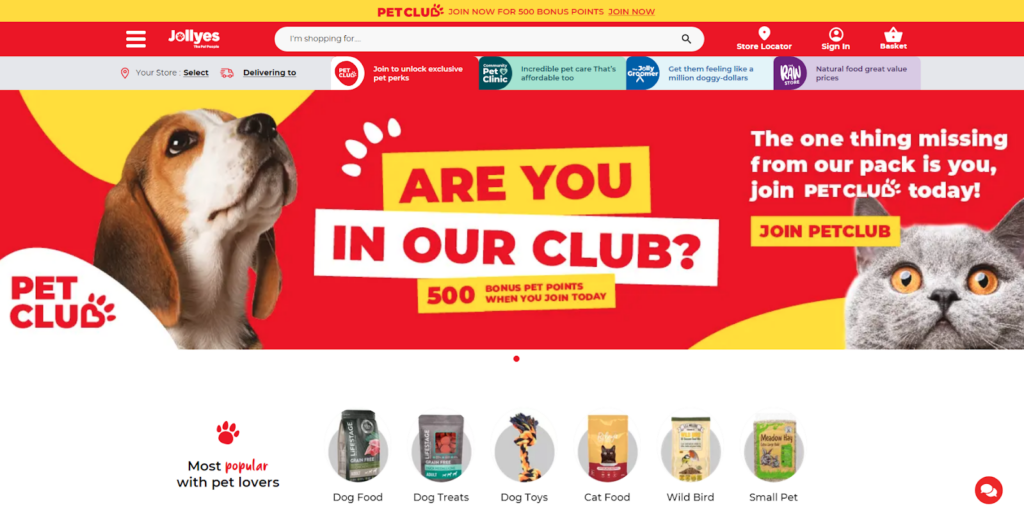
Jollyes, a well-established pet superstore chain, turned to composable commerce to rejuvenate its online retail presence.
With thriving offline stores but underperforming eCommerce, Jollyes faced various challenges, including an outdated website, user experience issues, performance problems, and complex code.
They needed to create a seamless and efficient online shopping experience while integrating with their offline channels and we helped them in this transformation:
- They redefined the user interface, creating an aesthetically pleasing and intuitive layout.
- An Omni-commerce experience was introduced, ensuring product availability visibility across online and offline channels, including BOPIS (Buy Online, Pick-up in Store).
- Lightning-fast page loading times were achieved through advanced frontend technologies.
- Integration with a headless CMS empowered non-technical teams to manage content efficiently.
This strategic shift to composable commerce has revitalized Jollyes’ digital retail presence, offering a superior shopping experience for pet lovers in the United Kingdom.
3. Phoenix Next

Phoenix Next, the Thai comic book publisher, turned to composable commerce to enhance its online presence. Facing challenges such as an outdated interface, abandoned carts, slow loading times, and code issues, they strived to optimize their digital platform.
They adopted a composable commerce approach, separating the frontend from the backend and integrating the Alokai (Formerly Vue Storefront) with Magento for flexibility.
Platform upgrades and code refactoring enhanced scalability and stability. Advanced frontend technologies were leveraged to boost overall website performance.
This transformation renewed Phoenix Next’s digital comic book retail, offering a user-friendly and engaging experience. It underscores the power of composable commerce in modernizing digital commerce.
4. Best Online Cabinets
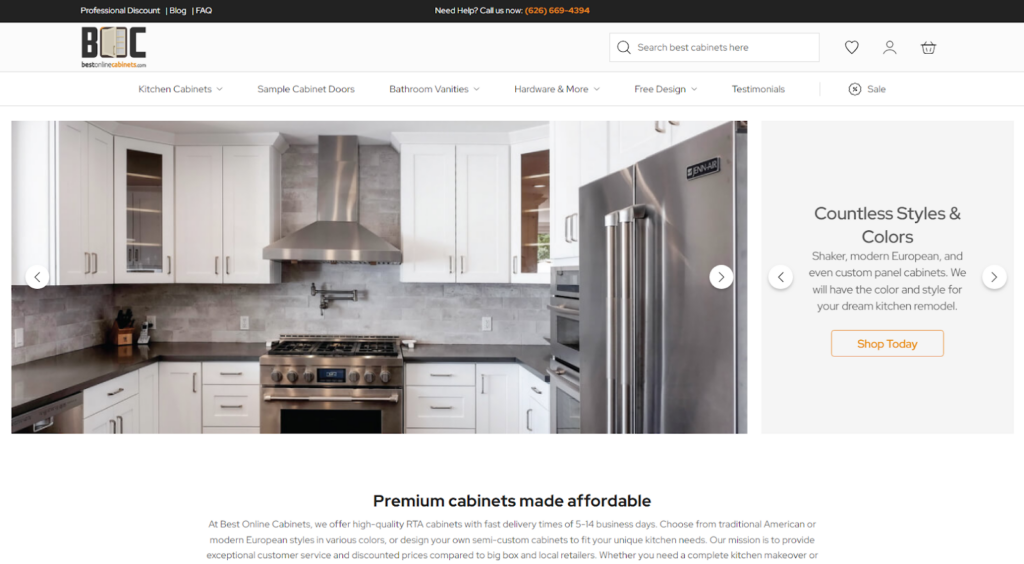
One of our clients, Best Online Cabinets (BOC), wanted to improve its online shopping experience and boost conversion rates. They faced challenges related to slow-loading web pages, complex redirections, and a lengthy checkout process.
The ultimate goal was to improve the digital experience!
BOC opted for a composable approach, choosing Alokai (Formerly Vue Storefront) on top of Magento 2 to revamp their frontend technology. This decision allowed for a dynamic and future-proof frontend solution.
Custom solutions were seamlessly integrated into frontend to provide a feature-rich and cohesive storefront.
To meet specific business requirements, we helped BOC introduce features such as:
- instant category switching,
- category comparison,
- panorama view, and
- promotional sales by category.
BOC’s adoption of composable commerce principles transformed its online cabinet shopping experience.
5. LoveCraft

LoveCrafts serves as a prime example of how embracing a Composable Commerce approach can drive efficiency and innovation in eCommerce. Recognizing the value of a modular, separated tech stack long before the trend, they faced the challenge of replacing an aging Magento platform.
Opting for headless commerce architecture, they selected commercetools for their flexibility and modular APIs, allowing them to cherry-pick components to meet their bespoke needs while avoiding vendor lock-in.
This journey showcased the significance of a careful selection process, as LoveCrafts evaluated 31 providers before settling on their winning combination.
With an exact focus on modularity, flexibility, and scalability, they created an architecture capable of delivering a superior user experience and supporting their omnichannel strategy.
LoveCrafts’ story exemplifies how Composable Commerce can empower eCommerce businesses to adapt, innovate, and thrive in the ever-evolving digital world.
6. Pella

Pella, a leader in the window industry, seized the Composable Commerce approach to revolutionize their digital strategy.
Recognizing the need to educate consumers on complex window configurations, Pella crafted a comprehensive online experience. They wisely chose the modular architecture, allowing seamless integration with existing systems and other top-tier vendors.
The result? An empowered customer base, dynamic catalog management, and the ability to refine the shopping journey for specific personas, all at digital speed.
Success, for Pella, isn’t just about traffic and engagement; it’s about revenue and customer learning. By understanding the customer journey, they plan to innovate new solutions and product offerings to create loyalty in an industry.
In a nutshell, Pella’s journey showcases the transformative power of Composable Commerce. It not only enabled them to navigate the intricate world of custom windows but also positioned them as pioneers in their industry.
7. Moteefe
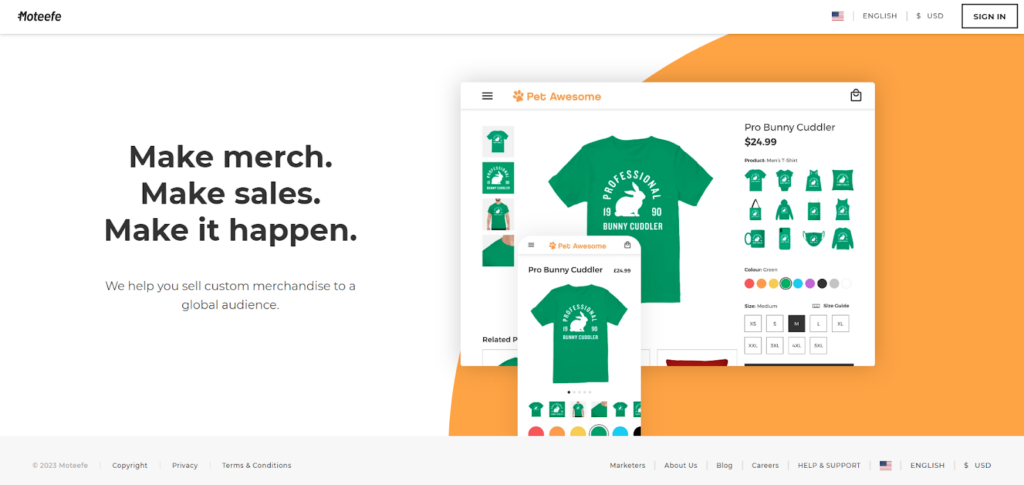
Moteefe serves as a great example of how adopting a composable approach can unlock efficiencies in the context of a complex, massively multi-tenant use case.
As a print-on-demand platform empowering entrepreneurs to sell customized merchandise through social media, Moteefe faced the challenge of managing a complex, massively multi-tenant use case with thousands of stores, catalogs, price points, and promotions, along with a seller portal.
They initially developed their custom commerce platform but found it increasingly burdensome to manage.
To overcome these challenges, Moteefe adopted Composable Commerce which allowed them to centralize their operations and regain control over the merchandise experience.
On the other hand, Moteefe reduced its reliance on custom development work, providing entrepreneurs with a more efficient and innovative platform while maintaining greater control over their commerce operations.
Moteefe’s story illustrates how Composable Commerce can simplify complexity, promote innovation, and enhance commerce control in a dynamic eCommerce world.
8. Burrow

When searching for the ideal eCommerce solution for specific business, Burrow recognized that off-the-shelf solutions lacked the necessary flexibility to meet their unique needs.
In response, Burrow opted for a composable solution, a strategic decision that provided customers with access to a range of features not typically found in standardized checkout experiences. These features included the ability to
- delay orders,
- request a signature on delivery, and
- utilize a headless content management system (CMS)
for creating a cohesive digital experience across various channels.
Burrow effectively tailored their eCommerce systems to align with their specific business requirements, offering customers a more versatile and personalized shopping experience while optimizing operational efficiencies.
This highlights how Composable Commerce empowers brands to adapt and innovate to meet their distinct eCommerce demands.
9. Cymax
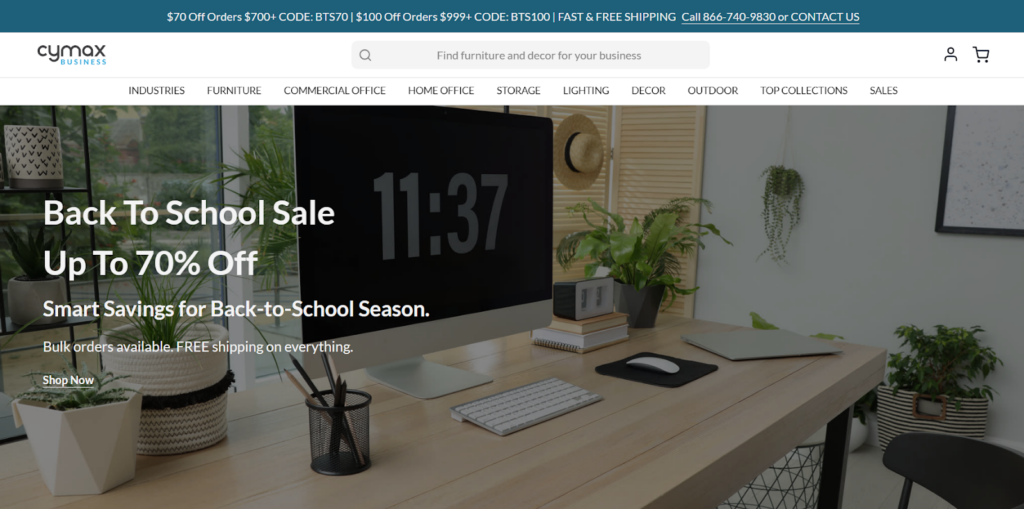
Cymax Group stands as a compelling testament to how adopting a Composable Commerce approach can unlock remarkable efficiencies. Operating as a provider of eCommerce technology and services for furniture vendors and retailers, Cymax manages a portfolio of four furniture websites.
In their goal of delivering outstanding shopping experiences to customers and consumers alike, Cymax recognized that Composable Commerce was the way forward. They fascinated by its
- flexible MACH architecture,
- renowned scalability, and
- innovative catalog management capabilities
(in the form of Packaged Business Capabilities – PBCs).
This strategic move underscores Cymax’s commitment to maintaining a robust growth revolution while ensuring agility and stability. They are dedicated to delivering exceptional experiences and continually reinforcing their eCommerce infrastructure to sustain robust growth.
By adopting this future-proof approach, they have equipped their direct-to-consumer websites with the agility needed to provide engaging and personalized experiences while upholding the critical pillars of speed and stability.
10. Ted Baker

Ted Baker demonstrates the efficiency-enhancing potential and benefits of Composable Commerce. This UK-based global fashion brand has embraced Composable Commerce principles to revamp its digital presence and offer a contemporary and captivating online shopping experiences.
Ted Baker’s approach involves running multiple distinct storefronts while maintaining a single eCommerce store. By doing so, they capitalize on the platform’s continually expanding partner network, reinforcing their position as a digital-first brand.
This innovative strategy not only streamlines their operations but also allows Ted Baker to adapt swiftly to evolving market demands and deliver a modern, engaging online experience to customers.
The Ted Baker example underscores how Composable Commerce empowers brands to navigate the digital world efficiently, fostering agility and customer-centricity.
11. Zenni Optical

Initially reliant on Oracle’s monolithic platform, Zenni Optical faced challenges related to slow page loads, scalability, flexibility, developer experience, and the need for future-proofing.
As Oracle discontinued support for their existing system, Zenni Optical embraced Composable Commerce as the solution. Zenni Optical transitioned to a composable commerce architecture, leveraging the power of API orchestration and portability.
The Composable capabilities allowed Zenni Optical to integrate and evaluate multiple backend services in a matter of weeks. This modular approach empowered Zenni Optical to avoid vendor lock-in and retain full control over the customer experience.
The result was a 50% acceleration in developer velocity, significantly reducing the time to market while enhancing website performance. The developer-friendly environment and streamlined code played a crucial role in achieving this remarkable efficiency.
Zenni Optical’s journey underscores the transformative potential of Composable Commerce in overcoming complex challenges and driving digital innovation.
12. Teilor

Teilor, a prominent luxury jeweler, faced challenges on their previous monolithic platform, including complex catalog management, limited expansion capabilities, and high ownership costs. Teilor transitioned from a monolithic platform to a composable approach.
This decision unlocked key advantages such as a modular architecture for faster time-to-market, an open ecosystem that fosters adaptability and enhanced customer-centricity, enabling swift site updates without heavy IT dependence.
As a result, Teilor achieved improved loading times, reduced downtime, and a more streamlined path to conversion, setting the stage for future innovations like augmented and virtual reality experiences.
Teilor’s composable commerce adoption not only addressed their immediate challenges but also positioned them for long-term success by providing the flexibility, scalability, and efficiency needed to navigate an increasingly competitive digital landscape and meet ambitious growth targets.
13. Winkelstraat.nl
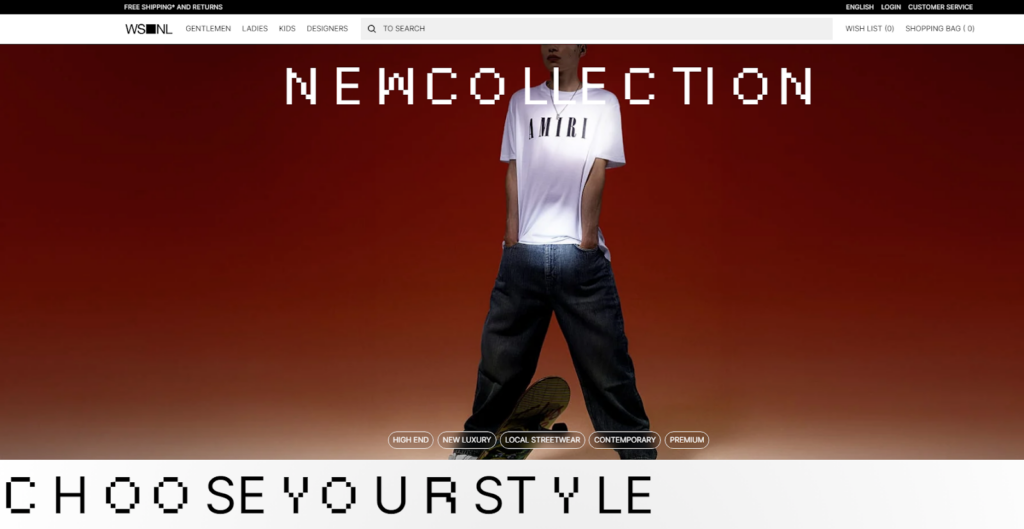
Winkelstraat.nl, the largest luxury fashion marketplace in the Netherlands, represents the efficiency gains possible through composable commerce.
Faced with the end of their existing commerce platform’s lifecycle, Winkelstraat.nl decided to embrace composable commerce as a solution to achieve better performance, flexibility, and a faster time-to-market.
Recognizing the need to reduce dependence on Magento and aiming for better performance, flexibility, and faster time-to-market, Winkelstraat.nl embarked on its composable commerce journey.
By adopting a composable commerce platform, Winkelstraat.nl was able to
- decouple the frontend presentation layer from the backend,
- reducing development time and
- streamlining their operations.
The scalability and developer-friendly environment with composable solutions empowered them to establish a high-performing frontend swiftly, resulting in significant time and cost savings.
This shift to a new approach highlights how embracing composable commerce can streamline operations, enhance scalability, and enable faster adaptation to changing market needs.
14. MKM
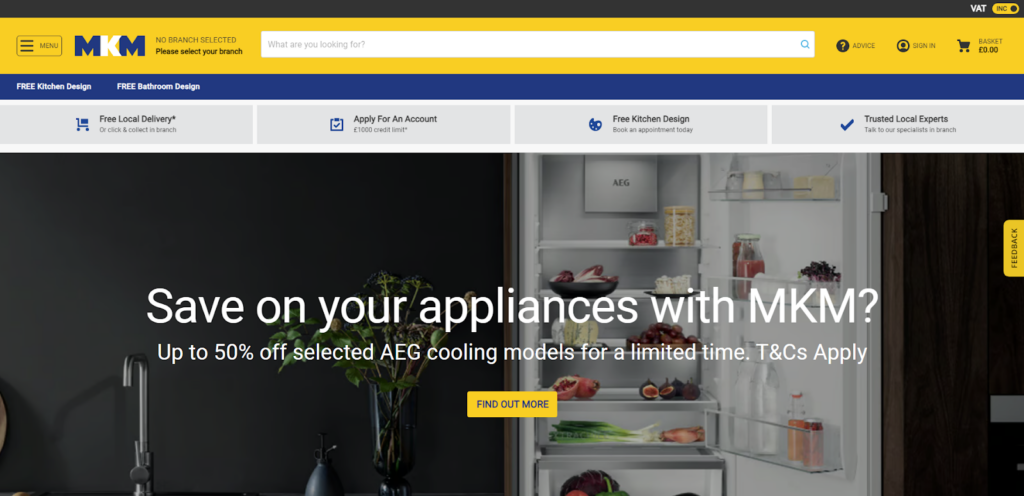
MKM’s transformation into a composable commerce model, leveraging the best-of-breed technologies (building blocks), illustrates the efficiency gains achievable through this approach.
Faced with challenges like an aging audience and poor web performance, MKM aimed to attract younger customers while improving online sales and customer experience across all the digital touchpoints.
By embracing MACH architecture with a Composable approach, they achieved a remarkable 75% improvement in page load speed and a 16% increase in site traffic in just the first four weeks of the new site going live.
This transition allowed MKM to future-proof its business, catering to the digital expectations of younger generations and unlocking significant performance enhancements.
15. Serena & Lily
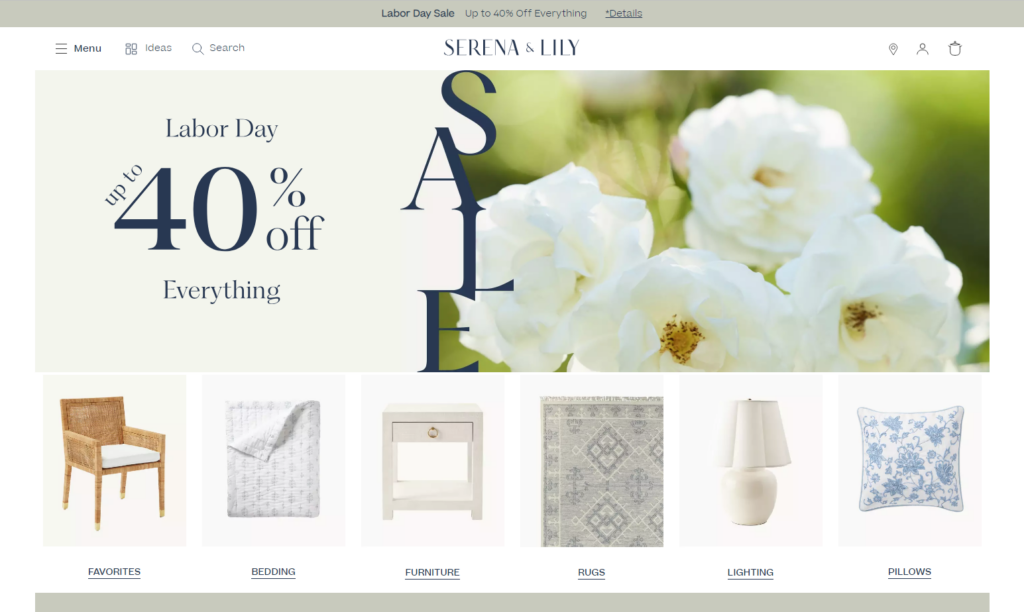
Serena & Lily, a design-focused online furniture and home interior retailer, showcases how composable commerce drives efficiency and enhances the customer experience.
Recognizing the importance of providing a digital shopping experience that matches their in-store service quality, Serena & Lily transitioned to composable commerce. Their previous monolithic platform couldn’t meet their requirements for customization and delivering unique product experiences.
The flexible Composable solution, with capabilities for bundling, promotions, cart management, and more, empowered Serena & Lily to create tailored, differentiated experiences for every online customer.
This shift reflects the critical role of composable commerce in meeting the customer expectations of luxury buyers and elevating the online shopping journey to in-person interactions.
16. Pukka Herbs
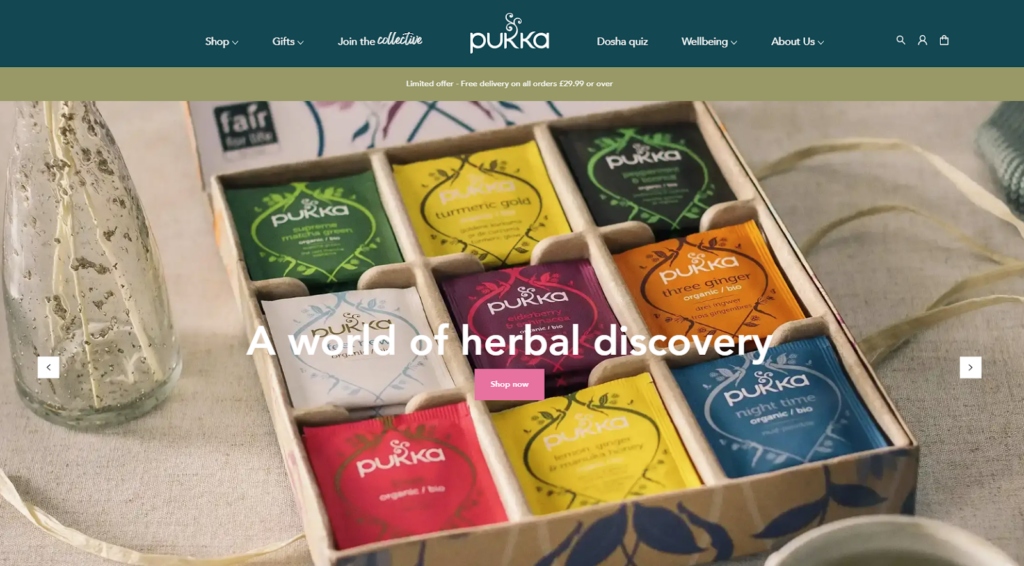
Pukka Herbs, a renowned organic wellness brand under Unilever, serves as a prime example of how composable commerce unlocks efficiencies in delivering superior digital experiences. With a commitment to promoting well-being through organic products, Pukka Herbs aims to provide exceptional digital experiences worldwide.
Their transition to a composable commerce approach,
- featuring Alokai (Formerly Vue Storefront) on the frontend,
- Shopify as the eCommerce platform, and
- Contentful as the CMS,
enabled them to focus on business logic rather than extensive development from scratch.
This shift drastically reduced their time-to-market, allowing developers to concentrate on business-oriented objectives. Mobile performance enhancement emerged as a primary goal, aiming to engage more users and boost revenue.
This strategic composable commerce approach empowered Pukka Herbs to achieve impressive results, including a 90+ Lighthouse performance score for desktop and the successful launch of multiple web stores, all contributing to a seamless customer journey and substantial growth.
17. Press Hall
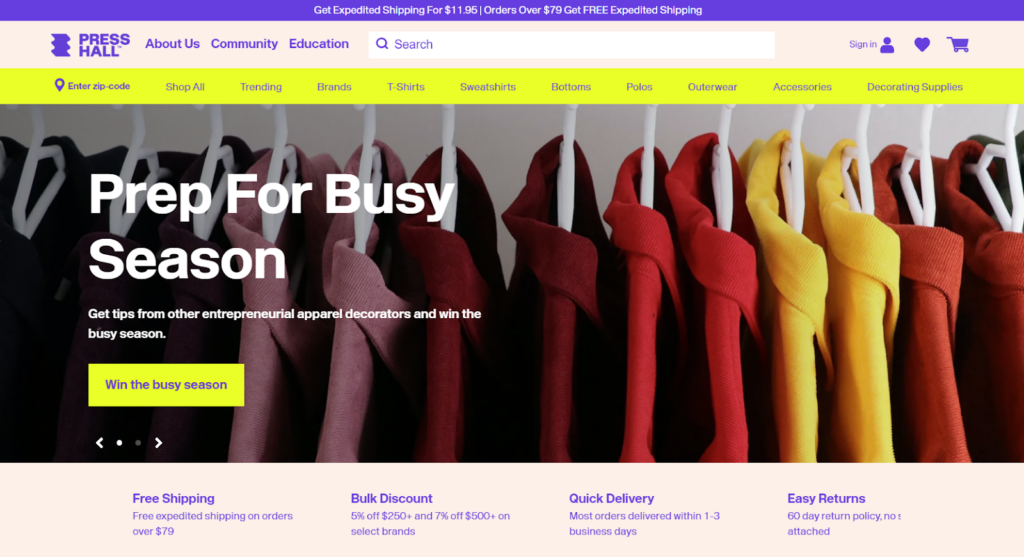
Facing stiff competition and the need to enhance customer engagement while speeding up their Time-to-Market, Press Hall turned to composable architecture as the solution.
This modular approach allowed them to seamlessly integrate best-of-breed technologies into a robust eCommerce stack, streamlining integration processes and reducing manual effort, while maintaining a highly scalable and flexible experience.
Press Hall prioritized achieving a faster Time-to-Market, avoiding the time-consuming and costly process of starting frontend development from scratch. To fulfill these objectives, they desired eCommerce solutions with
- extensive developer communities,
- out-of-the-box integrations with proven CMS and search tools, and
- managed hosting options.
By adopting a composable solution, Press Hall accelerated their development process by an impressive 50%, bringing their business to market in just 6 months compared to the typical 14-16 months.
From streamlining operations and boosting developer velocity to delivering exceptional customer experiences, composable commerce has proven to be the catalyst for success.
18. TAMRON
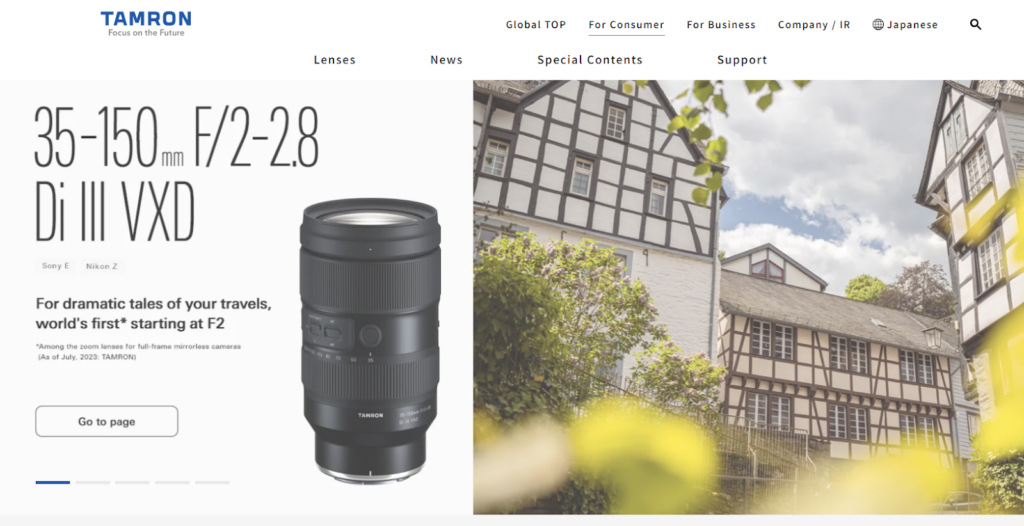
Tamron Europe, a prominent lens manufacturer, faced a significant challenge in evolving its online presence to directly engage with customers and enable direct product sales. Recognizing the growing importance of eCommerce, Tamron Europe embarked on a journey to transform its website into a fully functional eCommerce platform.
To accomplish this, the company adopted a composable approach, which allowed them to seamlessly integrate key eCommerce components into their existing web infrastructure like:
- shopping cart functionality,
- payment processing, and
- detailed product listings.
This e-commerce architecture was chosen for its ability to accelerate the transition into eCommerce while ensuring a smooth and direct purchasing experience for customers on their website.
With the modern approach, Tamron Europe aligned itself with evolving consumer expectations, enabling them to compete effectively in the digital marketplace and better serve their target audience.
19. Gorewear
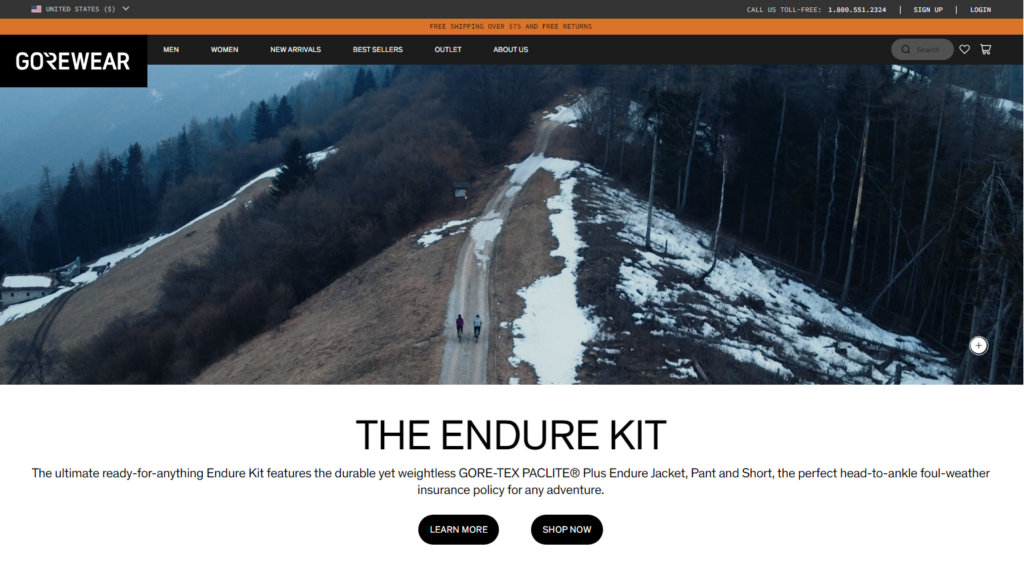
GOREWEAR’s adoption of a composable approach serves as a compelling example of how this strategy can unlock significant efficiencies. The brand was facing a challenge with multiple eCommerce platforms and a lack of interchangeable staff due to the complexity of these systems.
In response, GOREWEAR implemented a composable solution. The key components of their composable approach included BigCommerce as the eCommerce platform and Contentful for content and channel management.
By integrating these technologies, they achieved several important outcomes. They streamlined content management, including promotions, across their network of websites, all of which were connected to a single BigCommerce backend.
The composable architecture allowed GOREWEAR to:
- simplify their eCommerce operations,
- improve staff interchangeability, and
- enhance their ability to manage and deliver content consistently across various channels.
The adoption of composable software components has not only addressed their existing challenges but also positioned this eCommerce brand for more efficient and effective eCommerce operations in the future.
20. La Perla

La Perla, the iconic luxury lingerie brand, strategically embraced composable commerce to thrive in the digital age. Recognizing the evolving landscape of luxury fashion and e-commerce, La Perla underwent a significant transformation.
Key changes included:
- a shift towards digital-first strategies,
- substantial investments in e-commerce, and
- global expansion, targeting new markets like Australia and South Korea.
The brand harnessed advanced technologies, such as AI-driven product recommendations, to create personalized shopping experiences.
Crucially, La Perla adopted a modular approach to its tech stack, enabling customization and integration of various tools and platforms. They also developed an in-house team, reducing time-to-market and enhancing control over their digital strategy.
Data-driven decision-making became central, with analytics guiding strategies and optimizing the customer journey. Above all, the transition aimed to elevate the customer experience, fostering emotional connections.
La Perla’s successful journey into composable commerce underscores its adaptability and competitiveness in a rapidly changing industry.
Quick Recap: Composable Commerce Solution!
So, here you’ve seen how various brands found “Composable commerce” a great solution to overcome the challenges with existing traditional commerce platforms.
Not only this, these 15 composable store examples collectively emphasize composable architecture to make their online store future-ready and seize new opportunities in the ever-dynamic world of eCommerce.
It has empowered businesses to adapt, innovate, and thrive in an increasingly competitive market. As we’ve witnessed, composable commerce isn’t a one-size-fits-all solution; it’s a versatile toolkit that can be customized to meet the unique needs of each brand.
Do you also want to make your online store composable? Before that, you must consider whether your eCommerce business requires this big change or not.
If you are ready to go composable, we can be a part of this adventure. We can create exceptional storefronts for your composable eCommerce store. No matter what backend you choose, we are expertize in crafting frontend for Shopify, Magento, SAP Commerce Cloud, and commercetools.
Thanks for reading! Stay tuned for the next composable resource.






Post a Comment
Got a question? Have a feedback? Please feel free to leave your ideas, opinions, and questions in the comments section of our post! ❤️